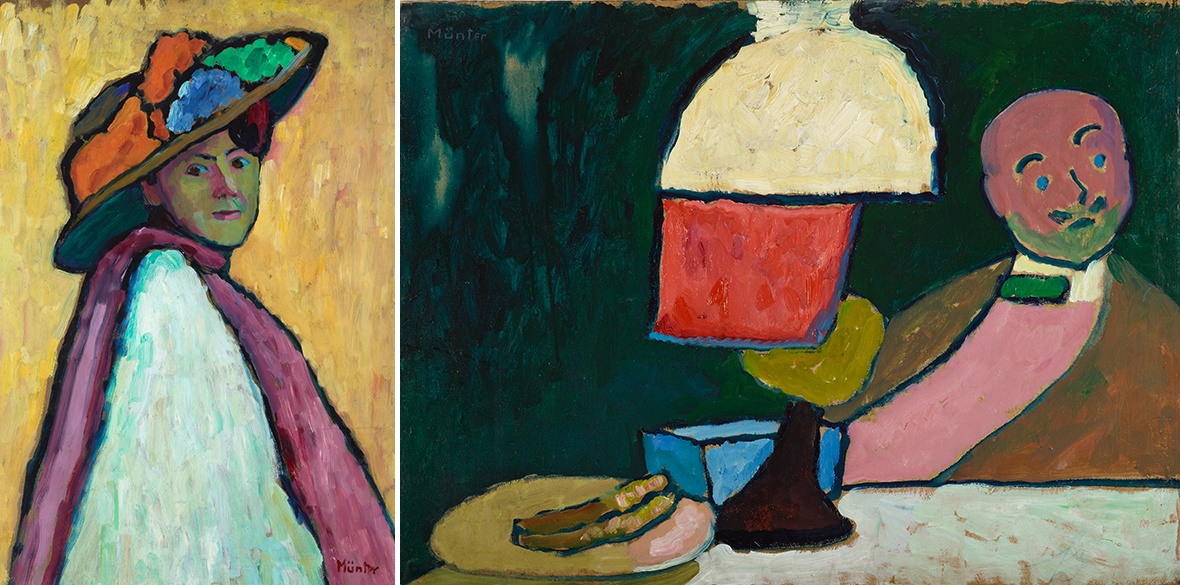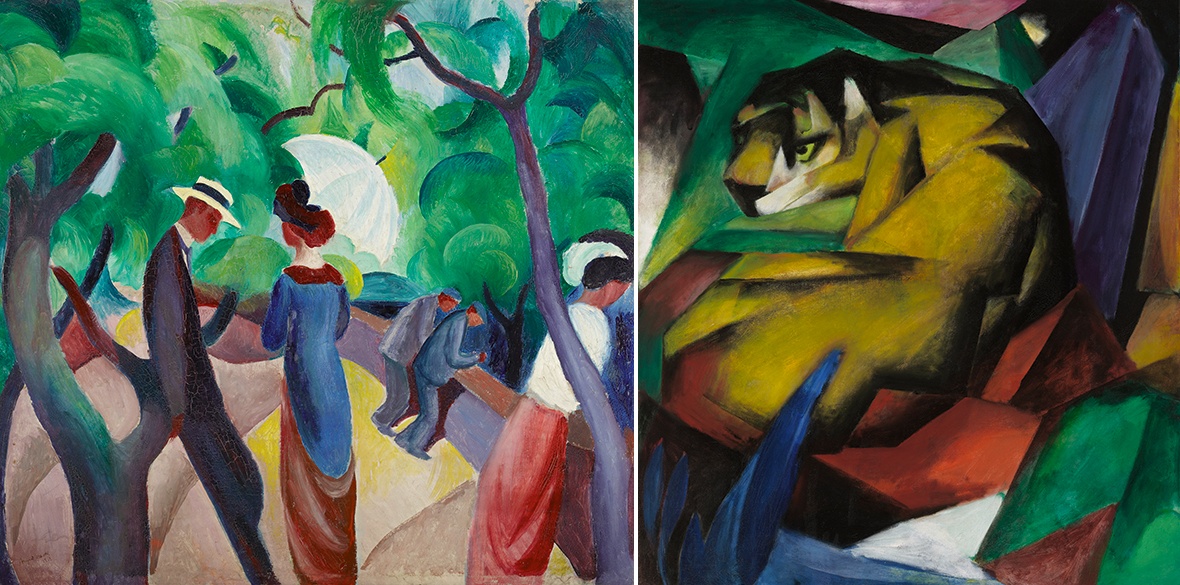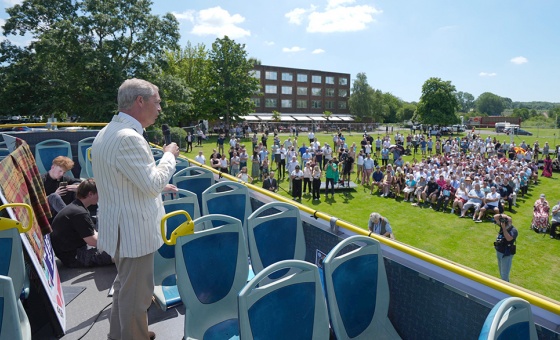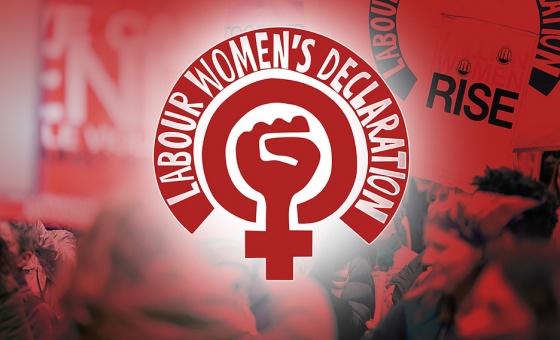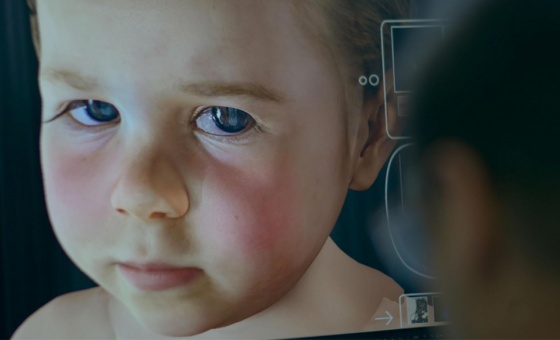This is the last article you can read this month
You can read more article this month
You can read more articles this month
Sorry your limit is up for this month
Reset on:
Please help support the Morning Star by subscribing here
Expressionists: Kandinsky, Munter and the Blue Rider
Tate Gallery, London
In 1912 the Blue Rider artist Franz Marc wrote: “We are today seeking behind the veil of nature’s outward appearance hidden things which seem to us more important than the discoveries of the Impressionists... Art always has been and is in its very essence the boldest departure from nature and ‘naturalness’. It is the bridge into the spirit world.” No wonder that their works baffled most of their public which was used to the 19th century’s highly realistic depictions of the visible world.

That Wassily Kandinsky, Gabriele Munter, Franz Marc, Auguste Macke, Alexei Jawlensky and Marianne Werefkin had the confidence to experiment so wildly stemmed partly from building on the achievements of the recent avant-garde. Indeed Kandinsky frequently acknowledged his profound debt to Vincent Van Gogh and Paul Cezanne, while he, Munter, Marc and Macke had all visited Paris in early 1900s, then the centre of European avant-garde art, where they had seen Post-impressionist, Symbolist, Fauve, and Cubist works. Moreover they were familiar with recent art theories and formal innovations via the lively European art journals, to which Kandinsky and Marc contributed.
Kandinsky’s Riding Couple of 1906-7 still has its roots in Symbolism. Aged 30, Kandinsky had rebelled against his academic education in law to become an artist and his early work conveys the sheer joy of dabbing, scumbling, dotting and delineating thick paint on card or canvas so that the paintings are not only a riot of colour but also of mark-making.
Study for Composition VII of 1913 fairly sings with uninhibited and ever inventive forms, odd juxtapositions of shapes and crazy lines twisting and turning as they travel hither and thither on mysterious trajectories.
Munter was more prone to using solid blocks of bright colour. Listening (Portrait of Jawlensky) of 1909 shows daring simplifications of form which tease the viewer in the deliberate child-like portrayal of her fellow Blue Rider artist. He has blue dots circled in bright yellow for eyes topped by thick black semicircular eye-brows giving him a comical surprised expression, while his pink, bald head echoes the paler pink of his shirt front. And the asymmetrical composition pushes every thing to the right, a deliberate snub to Academic theory with its emphasis on symmetry.

Her Portrait of Marianne Werefkin of 1909 is a joyful explosion of colour, much of it unmixed. Against a vivid yellow and ochre ground, she gives her sitter a green face highlighted in pinks and a splendid wide-brimmed hat adorned with orange, viridian and cobalt “flowers.” Portrayed in profile Werefkin turns her head to face the viewer, engaging her wide-eyed, mischievous gaze with ours.
The Blue Rider group’s desire to escape the strictures of academic art led them to find inspiration in children’s art and untutored Folk art, including German glass paintings. Munter and Kandinsky collected these and experimented with the difficult technique of painting with oil paint and inks on such a slippery surface as glass which, however, encouraged the awkward or naive simplifications and happy accidents which they sought.
Werefkin’s own works never achieved such heights of expression. She overworked the surface, used fiddly small brush strokes, timid or chaotic colour and predictable compositions. Her self-portrait circa 1910 conveys an intimidating, fierce sense of self-confidence and entitlement. But she made an important contribution to the movement as a socially powerful force, rich patron and enthusiastic, generous promoter of her fellow artists.
In 1911 the Blue Rider group held their first group exhibition in Munich; named after a Kandinsky painting depicting a blue horseman, it toured several German cities, then travelling to Budapest, Oslo, Helsinki, Trondheim and Gothenburg.
The outbreak of the Great War in 1914 broke up the group; Marc and Macke were conscripted and lost their young lives; “enemy aliens” such as Kandinsky, who was a Russian national, had to leave the German empire. He returned to his native Russia where he played an important part as progressive professor and organiser of exhibitions and museums in the new Soviet state.

Meanwhile, the rise of Nazism in Germany provoked vicious attacks on Modernist culture. In 1937 the Supreme Head of National Socialism inaugurated the major exhibition at the House of German Art in Munich by ridiculing Modernist art, saying: “It is either brazen impertinence or stupidity difficult to comprehend to confront our time of all times with works which might, perhaps, have been produced in the Stone Age.”
Yet only a few works by Kandinsky at this time were actually abstract (although these would soon follow). His subjects, like those of his fellow Blue Rider artists, remained within the western tradition of landscape, portraiture and interiors.
Nevertheless the majority of western artists before WWI were still working in realist or mild impressionist styles. It is hard to believe that most of the works in the Tate’s Expressionists exhibition are over 100 years old, as their colours shine out bright and fierce as if painted yesterday, while their compositions are as daring as can be.
However, by only focusing on the apolitical Blue Rider group, the Tate Gallery’s exhibition studiously omits contemporaneous, politically engaged German artists such as Kathe Kollwitz and George Grosz whose styles were equally expressionist.
Runs until October 20. For more information see: tate.org.uk
